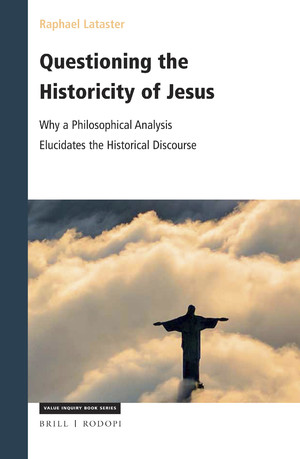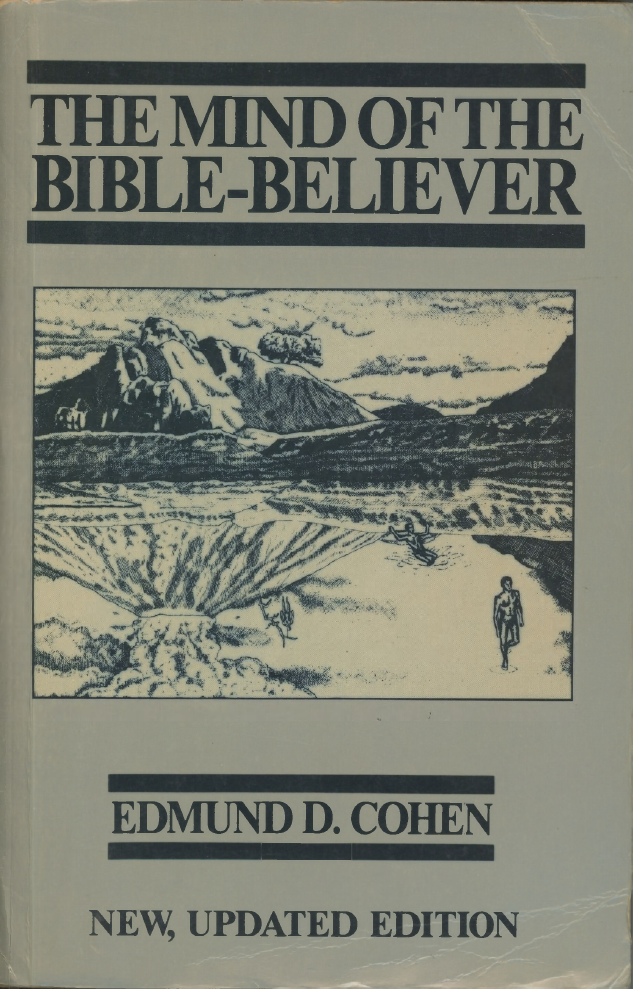
Of course, the Arab or Kurd is only ever in it for the money and tribal warfare is their way of life. How happily enlightened we are.
Musings on biblical studies, politics, religion, ethics, human nature, tidbits from science


Of course, the Arab or Kurd is only ever in it for the money and tribal warfare is their way of life. How happily enlightened we are.

The Lesson of the Watergate affair:
The major scandal of Watergate as portrayed in the mainstream press was that the Nixon administration sent a collection of petty criminals to break into the Democratic party headquarters, for reasons that remain obscure. The Democratic party represents powerful domestic interests, solidly based in the business community. Nixon’s actions were therefore a scandal. The Socialist Workers party, a legal political party, represents no powerful interests. Therefore, there was no scandal when it was revealed, just as passions over Watergate reached their zenith, that the FBI had been disrupting its activities by illegal break-ins and other measures for a decade, a violation of democratic principle far more extensive and serious than anything charged during the Watergate hearings. What is more, these actions of the national political police were only one element of government programs extending over many administrations to deter independent political action, stir up violence in the ghettos, and undermine the popular movements that were beginning to engage sectors of the generally marginalized public in the arena of decision-making. These covert and illegal programs were revealed in court cases and elsewhere during the Watergate period, but they never entered the congressional proceedings and received only limited media attention. Even the complicity of the FBI in the police assassination of a Black Panther organizer in Chicago was not a scandal, in marked contrast to Nixon’s “enemies list,” which identified powerful people who were denigrated in private but suffered no consequences. As we have noted, the U.S. role in initiating and carrying out the first phase of “the decade of the genocide” in Cambodia entered the Watergate proceedings only marginally: not because hundreds of thousands of Cambodians were slaughtered in the course of a major war crime, but because Congress was not properly notified, so that its privileges were infringed, and even this was considered too slight an infraction to enter the final charges. What was true of Congress was also true of the media and their investigative reporting that “helped force a President from office” (Lewis) in what is held to be a most remarkable display of media independence, or arrogance, depending on one’s point of view.
History has been kind enough to contrive for us a “controlled experiment” to determine just what was at stake during the Watergate period, when the confrontational stance of the media reached its peak. The answer is clear and precise: powerful groups are capable of defending themselves, not surprisingly; and by media standards, it is a scandal when their position and rights are threatened. By contrast, as long as illegalities and violations of democratic substance are confined to marginal groups or distant victims of U.S. military attack, or result in a diffused cost imposed on the general population, media opposition is muted or absent altogether. This is why Nixon could go so far, lulled into a false sense of security precisely because the watchdog only barked when he began to threaten the privileged.
Exactly the same lessons were taught by the Iran-contra scandals and the media reaction to them. It was a scandal when the Reagan administration was found to have violated congressional prerogatives during the Iran-contra affair, but not when it dismissed with contempt the judgment of the International Court of Justice that the United States was engaged in the “unlawful use of force” and violation of treaties—that is, violation of the supreme law of the land and customary international law—in its attack against Nicaragua. The sponsorship and support of state terror that cost some 200,000 lives in Central America in the preceding decade was not the subject of congressional inquiries or media concern. These actions were conducted in accord with an elite consensus, and they received steady media support, as we have seen in reviewing the fate of worthy and unworthy victims and the treatment of elections in client and errant states.
Herman, Edward S., and Noam Chomsky. 1994. Manufacturing Consent: The Political Economy of the Mass Media. London: Vintage. pp. 299-300

Okay, I give in. Here’s one more. Feel free to remind or alert me to any that I have forgotten or overlooked.

The Gospel of Mark is shaped out of a re-weaving of Jewish Scriptures. If you want to know its sources then they are, principally but not exclusively, in the “Old Testament”. I have posted on the identification of 160 such scriptures in chapters 11-16 of the Gospel as identified by Howard Clark Kee. (There are more that could be added to that post, especially relating to chapter 12.)
I thought of going through the earlier chapters to make a similar list but the task is simply too much to get through right now. Instead, I have limited myself to a general overview of some of the more obvious allusions to Jewish Scripture in the first chapter only. I’d like to add other chapters over time.
The following table is not exhaustive even for chapter one. More allusions could be identified but some require more explanation that takes more time to present. So I’ve kept the list at a somewhat general level. Notice the story of the leper is a direct transvaluation rather than a more direct reworking of the original. Jesus and the leper are humble foils of Elisha and Naaman. If in the gospel of Mark the original text said Jesus was indignant (as opposed to the more widely attested “moved with compassion”) when the leper knelt and suggesting Jesus could heal him, there may be some significance related to the amount of indignation that runs rife through the 2 Kings narrative: both king Ahab and the leper Naaman at different times become enraged or indignant over the processes involved that led to the cleansing of the leper. Maybe something is missing from our text of Mark, or maybe “compassion” was original to the text after all.)
Here’s the table: Continue reading “The OT Sources for Mark 1”

I discuss here my reading of Chapter 5 of Raphael Lataster’s Questioning the Historicity of Jesus. Here he looks at the problematic nature of the gospels and extra-biblical sources for Jesus.
Lataster discusses how historical Jesus scholars attempt to get around the problem that there are no primary sources for a historical Jesus. This absence leads scholars to focus on
1) the character and limitations of presumed oral traditions that bridge the gap between the gospels and the historical Jesus;
2) memory theory, what we theorize and know about social and individual memories.
Both of these studies do indeed raise awareness of problems for a historian’s access to a historical Jesus and Lataster cites numerous scholars who have contributed to our awareness of these problems. I suggest, however, that much of the discussion is at best a footnote to a debate over whether there was a person of Jesus at the start of Christianity. After all, the problems relate to the reconstruction of such a Jesus. If Christianity had some other origin then memories or oral traditions cannot have any relation to “a historical Jesus”.
The most famous extra-biblical reference to a historical Jesus is the Testimonium Flavianum of Josephus. Lataster’s discussion is a thorough coverage of the weaknesses of attempts to salvage even a smaller core of the surviving sentences, again citing a range of recent scholars who have expressed serious reservations about Josephus ever having said anything at all about our Jesus. I was pleased to see a detailed quotation from a publication by a distinguished professor in the field of linguistics, Paul Hopper. (Interested readers can see the quotation in an older post here.) As for the second passage in the Antiquities of Josephus, one which appears to be an after-thought reference to a Jesus related to a certain James, Lataster highlights Richard Carrier’s argument that the Jesus referred to is Jesus son of Damneus. (See David Fitzgerald Responds for details of the argument.) Carrier’s view makes some sense but I am not entirely sure it resolves all questions and for that reason I prefer Earl Doherty’s original discussion as the more satisfactory. But either way, there are significant problems with the view that Josephus identified James as “the brother of Jesus, the one called Christ”, both in syntax and context. It is important to address both Josephan passages but as Lataster notes,
it is important to realise that even if authentic, these verses do not necessarily confirm the existence of the Historical Jesus.
(Lataster, p. 200)
 Josephus is writing decades after the supposed historical Jesus and adds nothing to what is known from other sources, the implication being that there is no reason to suspect that either passage had any source other than Christians, either as Josephus’s late first century source or as later copyists of his work.
Josephus is writing decades after the supposed historical Jesus and adds nothing to what is known from other sources, the implication being that there is no reason to suspect that either passage had any source other than Christians, either as Josephus’s late first century source or as later copyists of his work.
Lataster’s comprehensive discussions of other ancient sources mentioning or interpreted as alluding to either Jesus or Christ — Tacitus, Pliny, Thallus, Suetonius, Mara bar Serapion, and the Talmud — draw in both scholarly rebuttals and common answers that as far as I am aware have never been countered by anyone attempting to use them as evidence for a historical Jesus. A new point concerning Pliny’s letter about Christians to emperor Trajan is also covered: Enrico Tuccinardi has applied a stylometric analysis that strongly indicates the entire passage is a forgery.
As for the canonical gospels, Lataster reminds us of the major obstacles to accepting them as sources for a historical Jesus. They are late documents, at least forty years after the narrated crucifixion, and they are accepted by critical biblical scholars as mythical or theological narratives of Christ, not a historical person. Whatever the form of Jesus behind them — historical or mythical — they are nonhistorical elaborations that have come to hide whatever that original concept was. Lataster buttresses his point with citations from critical biblical scholars. One such noteworthy name is that of the pioneer of the Jesus Seminar, Robert Funk:
As an historian, I do not know for certain that Jesus really existed, that he is anything more than the figment of some overactive imaginations… In my view, there is nothing about Jesus of Nazareth that we can know beyond any possible doubt. In the mortal life we have there are only prob abilities. And the Jesus that scholars have isolated in the ancient gospels, gospels that are bloated with the will to believe, may turn out to be only another image that merely reflects our deepest longings.
(Robert Walter Funk, “Bookshelf: The Resurrection of Jesus,” The Fourth R 8, no. 1 (1995): 9., in Lataster, p. 219)
Given the prevailing near consensus that the Gospel of Mark is the earliest gospel it is reasonable to consider the possibility that all subsequent references to and portrayals of a historical Jesus can go back to that gospel. Lataster cites Bart Ehrman to this effect:
If there had been one source of Christian antiquity that mentioned a historical Jesus (e.g., Mark) and everyone else was based on what that source had to say, then possibly you could argue that this person made Jesus up and everyone else simply took the ball and ran with it.
(Lataster, p. 220, citing Erhman from https://ehrmanblog.org/gospel-evidence-that-jesus-existed, accessed 05/04/2017.)

 This post is about propaganda and how it works, and how it is working today in an unhealthy way in the United States — as perceived by me, an Australian.
This post is about propaganda and how it works, and how it is working today in an unhealthy way in the United States — as perceived by me, an Australian.
When I was struggling in my last days in a religious cult I picked up The Mind of the Bible-Believer by Edmund Cohen and I hated so much of what I read. My copy of the book is riddled with pencilled notes that do sometimes tick and underline stong agreement but at other times asterisk outraged disagreement. It was early days for me. Take the fourth chapter, The Evangelical Mind-Control System. Its first subsection is headed Device 1: The Benign, Attractive Persona of the Bible. I have a pencilled note against that heading:
No — Bible is an open book. In fact many without in depth study of the Bible say it is very unattractive.
I see now in hindsight that I was missing the point of the argument. But let’s get to the point. This post is a follow up to Characteristics of Trump Supporters. I once posted The Benign, Attractive Persona of the Bible. Let’s compare the mind-control methods that trap the bible-believer with the propaganda of Trump.
He’s a winner. He promises his supporter’s they’ll get sick of winning. And he’s an underdog, a mere outsider, and boasts that the outsider can change the system. And Fox cable TV is sexy.
Cohen began his discussion of the Bible thus,
The best things in the Bible are superficial. Another way of understanding the kindly, philanthropic, and surprisingly tolerant old-time religion we described earlier is to note that its proponents took the lovely surface impressions of Jesus in the Gospels and built a whole new religion out of them alone.
. . . .
What I mean by the persona of the Bible, then, is an apparent relevancy of teaching and promise of benefit that finally turn out to have totally different meanings from what the new inductee was led to think. We will encounter it many times, as our analysis unfolds. Little by little, newcomers are brought along to understand the teachings to mean something altogether different from what appeared on the surface—
(pp. 170, 171. My bolded highlighting)
What comes to mind here are points such as “draining the swamp“. That phrase once meant shutting down the ability of rich and powerful elites from using their wealth and power to catapult them to even more wealth and power. We have seen in the last few days how a President who has used his office to benefit his own companies and those of his family (Trump enterprises and those of his daughter and wife) while attacking political opponents (e.g. Joe and Hunter Biden) who appear to have been doing much the same.
Edmund Cohen writes, p. 172:
We earlier covered representative biblical teachings requiring the believer to distrust and to disparage reliance on his own mind for knowledge.
Trump continually pounds the message that nothing said by his critics has any credibility. They are all making up “fake news”. The Democrats are motivated by an inability to accept that they lost the 2016 election and that’s why they continually look for ways to attack “your favourite president”. They even “make up fake sources” for their stories. Continue reading “The Mind of the Trump Supporter”